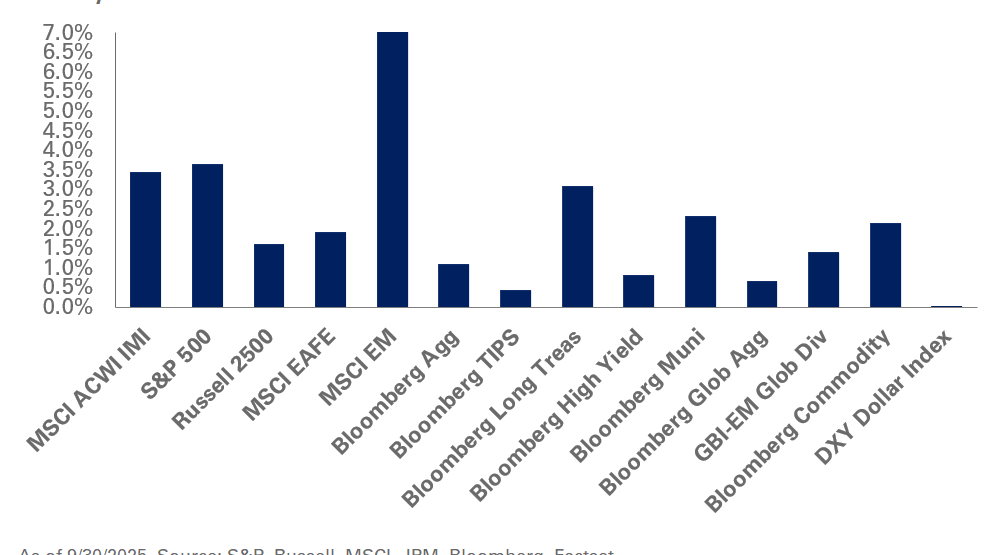When things are working well personally or professionally, we are often inclined to maintain the status quo. For corporate defined benefit (DB) plan sponsors, interest-rate hedging likely served them well in recent years. Hedging portfolios consisting mainly of long-duration Treasury and corporate bonds have generally helped corporate DB plans track liabilities and reduce funded status volatility.
That said, with the yield curve significantly inverted and interest rates at multi-year highs, we believe there are modest changes sponsors should consider for their hedging portfolios including:
- Hedging liabilities across the curve by adding intermediate bond exposure
- Exploring completion management for more precise hedging
- Managing credit spread risk exposure
- Modestly increasing portfolio liquidity
Focus on Hedging Across the Curve
Over the last decade, as more corporate DB plan sponsors adopted liability-driven investing (LDI), long-duration Treasury and corporate bonds have been the cornerstone of hedging portfolios. While this approach is prudent, it can lead to concentrated exposures at the long end of the curve (20-30 years). In particular, plans that make use of long Treasury STRIPS frequently have an overweight to the 30-year point on the curve relative to their liability profile.
Although STRIPS and long-duration coupon bonds are popular tools to obtain interest rate exposure in a capital efficient manner, we believe sponsors could benefit from a better match of liability exposures across the curve. This is especially true today as the yield curve remains deeply inverted. Sponsors can potentially achieve better liability matching by supplementing longer-duration exposures with intermediate-duration Treasury and corporate bonds. Doing so allows sponsors to increase their overall portfolio yield, reduce concentration at the long end of the curve, and better match the plan’s liability profile. Of note, liability durations have generally shortened as interest rates have risen in the last few years and as plans have continued to mature.
Additionally, while we generally recommend sponsors focus on long-term strategic positioning within hedging portfolios, we have observed that intermediate corporate bond spreads are above median levels, setting up an attractive entry point. By comparison, long-duration corporate bond spreads are very close to their historical median, leading us to recommend that sponsors take a neutral position (relative to strategic targets) at that part of the spread curve.
Explore a Completion Mandate
A natural follow-up question for sponsors is how to get exposure to the intermediate part of the yield curve. The most straightforward approach is to select one of many traditional active or passive strategies available. Another more complex option is to hire a completion manager.
While the completion mandates can vary, the typical role of a completion manager is to develop a customized solution to align a DB plan’s asset duration and curve exposure with the plan’s liabilities. A completion manager will typically consider other portfolio exposures and fill in gaps relative to the liability profile through a combination of physical securities and derivatives. Additionally, completion managers can also quickly respond to changes in funded status and more precisely manage the plan’s interest-rate and yield-curve exposures as the market environment changes. In today’s market environment, engaging a completion manager may be especially beneficial to plan sponsors.
Before hiring a completion manager, sponsors should be aware that completion mandates:
- Involve derivatives with collateral requirements
- Are not expected to add alpha
- Are difficult to benchmark
- Have more complex fee schedules
Understand Credit Spread Risk
While most plan sponsors have embraced LDI to mitigate interest rate risk, we would recommend that sponsors also understand the credit-spread risk inherent in plan labilities. Corporate DB plan liabilities are discounted using high-quality corporate bond yield curves. As a result, liability valuations are also sensitive to changes in credit spreads.
As plans become better funded and hedge a substantial portion of their rate risk, we believe it is important to understand credit spread risk and potential mitigation approaches. As a starting point, it may be appropriate to get a sense of the plan’s current credit spread hedge ratio and then determine if adjustments are appropriate. When evaluating credit spread risk, it is also important to understand the indirect relationship between credit spreads and equities, given that many plans continue to allocate a portion of plan assets to equities.
Review Liquidity Needs
In addition to building a refined hedging portfolio, we believe plan sponsors should also review their total portfolio liquidity needs. We believe sponsors should emphasize holding enough cash to meet near-term benefit payment needs given elevated market volatility, continued uncertainty related to the future path of rates, and lower contribution amounts. We generally recommend clients hold at least three months of benefit payments in cash. To supplement cash allocation, another approach to consider is using income (coupon payments) from bond portfolios as a recurring source of liquidity.
Completion managers may also be able to play a role here as well. Specifically, sponsors can hold more in physical cash while the completion manager uses derivatives to maintain market exposure. This allows the sponsor to hold a higher-than-normal level of cash in the portfolio without creating a significant drag on portfolio performance. With cash yields around 5% today, the drag on performance from holding cash is no longer as significant as it was just a couple of years ago. It may be appropriate to include a target allocation to cash in the plan’s strategic asset allocation targets if there are concerns around increased tracking error of the plan’s total performance relative to policy benchmarks due to elevated cash levels.
Conclusion
Liability hedging has increased in popularity for many plan sponsors over the last two decades. For much of that time, traditional hedging strategies have served sponsors well. We believe now is the right time to re-evaluate this approach as interest rates are at multi-year highs and the yield curve is significantly inverted.



